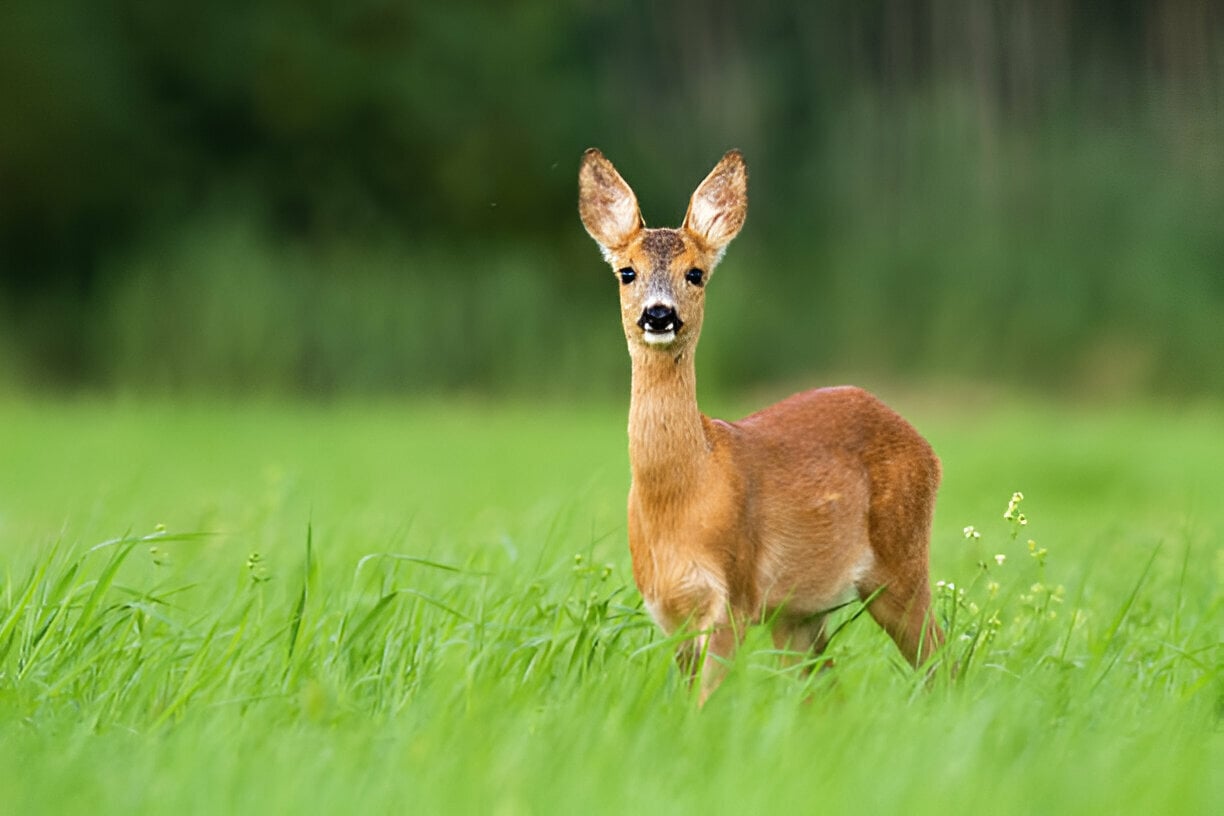Usually, we associate deer with calm, elegant animals that softly move through woods and meadows and pastures. But beneath their poker like faces they share with us a visual system designed for fight or flight. Deer vision then represents a combination of an innate ability and adaptability that continues even today to protect an animal in a world of threats and obstacles. To say nothing of the human-made ones.
Interestingly, adaptability is a concept familiar to platforms like the 22Bet online bookmaker. There, users navigate dynamic sports betting markets with precision and strategy. Just as deer rely on their vision to detect subtle changes in their environment, bettors leverage their analytical “vision” to anticipate outcomes in ever-changing scenarios.
Table of Contents
Deer Vision- What Makes Them Different?
The lesson is that deers do not perceive things as humans do.
Their eyes are specially structured to prioritize survival over detail. While we rely on sharp color perception and depth, deer have evolved to detect motion. They navigate their environment efficiently, particularly during dawn and dusk.
A Wide Field of View
Deer possess large, laterally placed eyes. This positioning grants them a panoramic field of vision, covering nearly 310 degrees.
Rod-Dominated Eyes
The retina in a deer’s eye contains far more rod cells than cone cells. Rods are photoreceptor cells. They detect light intensity and motion. That makes deer highly adept at seeing in low-light conditions. This adaptation aligns perfectly with their crepuscular habits. They’re most active during the dimly lit hours of dawn and dusk.
Limited Color Perception
Deer are not completely colorblind, but their color vision is restricted compared to humans. They are dichromatic, meaning they can perceive two primary colors—blue and green. Bright reds and oranges appear as muted browns or grays. That’s why blaze-orange hunting gear doesn’t stand out to them but is visible to humans for safety.
How Deer Detect Predators
Living in the forest is all about being on the lookout all the time. Different sources account that deer uses vision, hearing and olfactory organs to avoid predators. In this trifecta, vision is very important in the identification of motion.
Movement Is Key
A deer can be alert at the slightest movement. Due to their high sensitivity to motion they are able to detect rustling grass or a predator moving through the brush. This is where their rod-dominated eyes really stand out. They are good at noticing changes for contrast, even in poor lighting conditions.
The Tapetum Lucidum Advantage
Can you remain oblivious that a deer’s eyes shine at night like a torch? This is because of a reflective layer of tissue known as tapetum lucidum lying just behind the retina. It works like a reflector for light by sending the reflected light back through the retina if given any form of light illumination even at night. This feature makes them the lords of night cruising, which is an essential thing to avoid Fayette predators at night.
Challenges in a Predator-Rich World
Despite their visual prowess, deer are not invincible. Their poor depth perception can make judging distances tricky, which is why they often rely on other senses to complement their vision. A predator that stays perfectly still might avoid detection, as deer rely heavily on motion cues to identify threats.
Moreover, their limited color perception means they rely more on texture and contrast than vivid hues to recognize their environment. This can sometimes work against them when predators are camouflaged in natural settings.
How Understanding Deer Vision Helps Humans
To hunters and lovers of wildlife in general this ability translates to an understanding of the world as perceived by deer. For instance, hunters apply this knowledge while extending their visual system with the materials that can be seen by a deer. Even if the hunter is dressed unsuitably for the climate or terrain, total black bodies are less conspicuous than bright coloring and the patterning which disrupts the figure of a man. Similarly, noise and swift movements mean death whatever type of terrain one is trapped in.
Other than that, wildlife photographers and conservationists can also find this kind of knowledge useful when relating to deer and its vision. Studying such time and space features of deer’s activity and their assessment of surroundings, one can enhance the observation and recording process without disturbing the animals much.
A Window Into Evolution
Understanding how the deers see is an interesting view of how evolution molds survival tactics into beings. They are no slits shaped to define beauty or perfection, but rather are heavy-set organs which are meant to bear the triangular brunt of sleepless nights and never-tiring watchfulness. Motion detection and low light sensitivity makes for unique positions in animal hierarchy where deer have always outwitted hunters for hundreds of years.
Well, the next time you see a deer start to freeze and stare, maybe it is not staring at you. It’s surveilling you and judging whether you are a danger and whether some prehistoric fight or flight strategy should be triggered next. For researchers in the domains of prey and predator, the science of vision is not only interesting—it is a matter of life and death.

